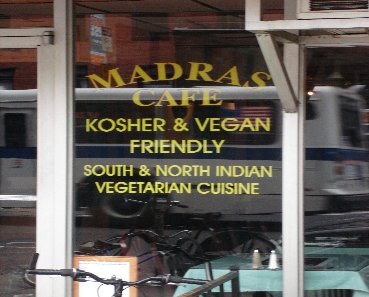East Village- Here v. There
From Decoding New York
| Introduction |
| The East Village |
| * Evolution |
| * Here v. There |
| * Economy |
| * What's Real |
| Bay Ridge |
| * Evolution |
| * Here v. There |
| * Economy |
| * What's Real |
| Comparison |
| * Photo Gallery |
| * Sources
|
The area that is now the East Village has seen many waves of immigrants arrive to stake their claims and carve their own niches into the city’s culture. Early groups included the Irish, Germans, and Italians, who were generally poor and settled in cramped tenements with often as many as 16 to 22 people per household. Fleeing the horrors of the Potato Famine, the Irish brought with them a strong sense of unity with their native country, especially in its rebellion against England. Irish shipbuilders erected the Church of St. Brigid’s, designed with tall steeples (cut down in 1962) that were banned by the English. The Great Astor Place Riot broke out in May of 1849 when Irish immigrants protested the appearance of the English actor William McCready at the nearby Opera House. By 1860, about a third of New York City was Irish, a population that could no longer be entirely ignored or marginalized. Irish immigrants eagerly supported Tammany Hall's efforts to make them legal citizens, only to be informed at the outbreak of the Civil War that they were now eligible for the draft. The resentment shared by much of the largely immigrant working-class population exploded into Draft Riots, the five of the bloodiest days in New York's history.[1]. Hundreds of African-Americans were driven from the city, dozens died including eleven who were lynched, and countless homes and businesses were destroyed.
The neighborhood’s former name, Kleindeutschland (or “Dutch Town” to outsiders), testifies to the mark made by the German population in the 1800s, while Eastern European Jews moved in during the early years of the 20th century, finding a niche in the city’s garment industry. A significant aspect of Jewish culture was Yiddish Theater, brought to America by Abraham Goldfaden, who immigrated to New York when Russian authorities banned all Jewish theatricals in 1883. Irene Heskes described the Yiddish musical theater as a “uniquely valuable night school of an immigrant people.” The theater and its Vaudeville companion became a highlight of the Jewish American culture, not only bringing Old World value to the new American life, but also bridging the differences between older Jewish immigrants and the new ones. The theater became a sort of “surrogate parent” in that it helped ease transitions by guiding newcomers in their new home. The center of this new movement was in the Bowery, an energetic region in the East Village, and soon the area, which had before served the German and Irish immigrants, became known as the “Yiddish Rialto in America”.
The most recent immigrant group to arrive in the area is Hispanic, largely Puerto Rican and Dominican. This group’s presence is most evident around the southeastern portion of the Village, in the Alphabet City/Loisaida area, where Hispanics made up 25% to 50% of the population in the 2000 census. According to Mathew Savoy, who moved to the area five years ago, "The East village is one of a kind in Manhattan. Many people gather here from all ethnicities. They know that here they will be accepted and can find someone they can communicate with. The atmosphere is enriched by what they bring to the area. Often times I am stopped on the street and asked to show directions in Spanish. They see my roots in me, and know that they can ask for help." (Mathew Savoy, Interviews) One of the most recent and notable contributions to the city's cultural landscape has been the emergence of the Nuyorican poetry movement - centered around the aptly named Nuyorican Poets Café [2] - which has been compared to the African-American poetry that began to gain power during the Harlem Renaissance. This community, in other words, is following in the footsteps of the ethnic groups before it, taking the old country to the new and creating something newer.

